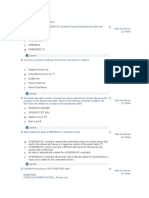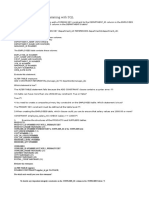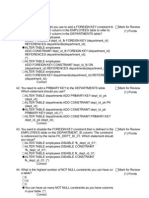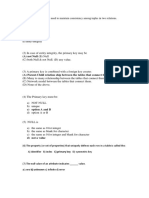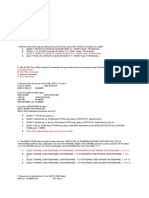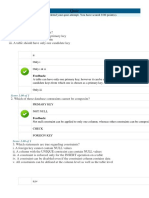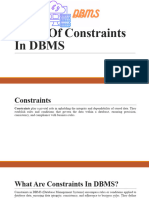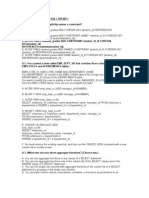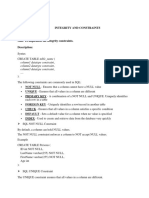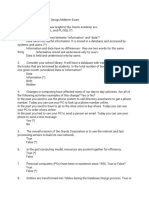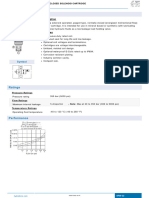0% found this document useful (0 votes)
43 views14 pagesDatabase Programming Section 14 Quiz
The document is a quiz on database programming focusing on SQL constraints, including FOREIGN KEY, PRIMARY KEY, and NOT NULL constraints. It contains multiple-choice questions that test knowledge on how to add, remove, and evaluate constraints in database tables. Key concepts include integrity constraints, the structure of SQL statements, and the behavior of different types of constraints.
Uploaded by
José Obeniel LópezCopyright
© © All Rights Reserved
We take content rights seriously. If you suspect this is your content, claim it here.
Available Formats
Download as PDF, TXT or read online on Scribd
0% found this document useful (0 votes)
43 views14 pagesDatabase Programming Section 14 Quiz
The document is a quiz on database programming focusing on SQL constraints, including FOREIGN KEY, PRIMARY KEY, and NOT NULL constraints. It contains multiple-choice questions that test knowledge on how to add, remove, and evaluate constraints in database tables. Key concepts include integrity constraints, the structure of SQL statements, and the behavior of different types of constraints.
Uploaded by
José Obeniel LópezCopyright
© © All Rights Reserved
We take content rights seriously. If you suspect this is your content, claim it here.
Available Formats
Download as PDF, TXT or read online on Scribd
/ 14
